| Author |
 Topic Topic  |
|
Aaron Cake
Administrator
    
Canada
6717 Posts |
 Posted - Feb 03 2013 : 11:36:49 AM Posted - Feb 03 2013 : 11:36:49 AM





|
| Seems to me a peripheral Renesis is going to have the same overlap as a standard peripheral exhaust port 13B...and if it doesn't, then the side exhaust ports aren't going to be large enough to flow enough for the peripheral intake ports. |
 |
|
|
urquiola
Apprentice
  
Spain
97 Posts |
 Posted - Mar 20 2013 : 3:51:53 PM Posted - Mar 20 2013 : 3:51:53 PM


|
| Your proposals look pretty right, but in the lack of a Software able to simulate this, and also of the expertise for doing it, or not having a possibility of obtaining actual data about this experimental approach, I can't say yeah! or nay!. The people in www.rotaryeng.net seem having tested the Peripheral Intake Port-Side Exhaust in a modifyed Rx-8 Renesis engine, but as their main field of scope is RCEs in aviation, the performance of this arrangement in a car can be only estimated, both environments are quite different. Salut + |
 |
|
|
urquiola
Apprentice
  
Spain
97 Posts |
 Posted - Mar 22 2013 : 12:08:21 PM Posted - Mar 22 2013 : 12:08:21 PM


|
| Hi: please, have a look ak this: http://www.youtube.com/watch?v=m3pCLjHZmhM From the very old times of internal combustion engines, it was known that the lower the compression ratio of an engine is, the higher the exhaust gas temperatures are, this may have been one of reasons of the poor results of first Poppet Valves. Does this apply also to RCES? Is there a difference in actual compression ratio of a Wankel Engine, and geometrical compression ratio of an RCE, as in Two-Stroke engines? Salut + |
 |
|
|
urquiola
Apprentice
  
Spain
97 Posts |
 Posted - Mar 25 2013 : 6:54:43 PM Posted - Mar 25 2013 : 6:54:43 PM


|
Attached please find a graphic on the results of a RX8 Renesis engine with Peripheral Intake Porting, as received from rotaryeng.net, coming from Mazdatrix. Results look very interesting for an Airplane mounted Renesis, but the slightly reduced output that seems appearing in the low rpm end of functioning may not be so good in cars, at least in street cars, than in airplanes, again, Reed-Valve controlled PP data are missing, and a R-V may probably add to the lower rpm and part load results of PP, as it will act as an always adequately placed PP opening and closing in the admission stroke. Enjoy it!
Download Attachment:  RX8PP264a-Stock-RX8 data.jpg RX8PP264a-Stock-RX8 data.jpg
153.55 KB
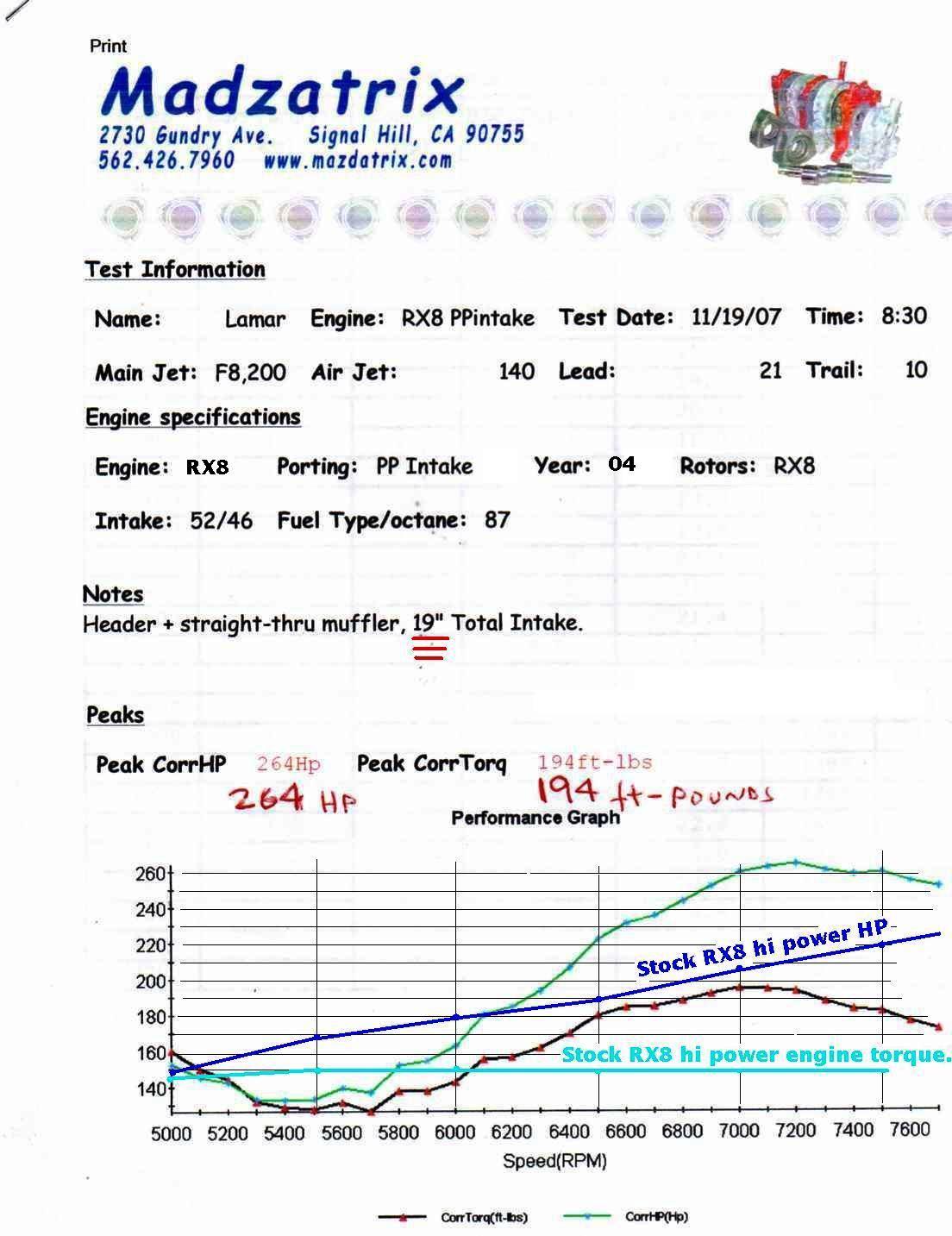 |
Edited by - urquiola on Mar 25 2013 6:57:55 PM |
 |
|
|
urquiola
Apprentice
  
Spain
97 Posts |
 Posted - Jun 16 2013 : 2:08:54 PM Posted - Jun 16 2013 : 2:08:54 PM


|
An old chart in a 1974 book by E McGovern 'The rotary engine handbook', shows that apex seals' wear is nearly 5 times less if the fuel used in the Wankel RCE contains Lead, that acts as a solid state lubricating agent. Of course, leaded gasoline is not available today, but there are other solid state lubricating agents, as Molybdene Sulphure (MoS2), that is sold as a lubricating oil additive under brands such as 'Molykote A' or 'Liqui-Moly'. I have no info about the use of Molybdene additives for 2-Stroke engines oil, and I'm waiting for the response of the German producer of 'Liqui-Moly', to know if it can be used in Wankel RCEs, as a possibility exists that this solid state lubricating agent fouls the plug, or induces problems in the seals.
Another issue: Kawasaki patented in the USA in 1974, patent Number 3848574, accessible for free download in ESPACENET, that putting a small recess in the shape of a wedge from the plug hole in the trochoid surface, towards the trailing edge of the combustion chamber, would redirectionate the flame front towards the rear part of chamber, where combustion is usually more difficult, and where unburned gas that contributes to decrease power output, increase fuel use and emissions is located. The same concept appears in a SAE paper: 921444E by Marcos Langeani from Chile. The plug hole improvement is very easy, cheap and safe to implement, it may allow using a fuel to air ratio more favourable to fuel economy, power and emissions, and is highly suitable for single plug per rotor engines, and, please, if somebody tests it, let us know the results. Nice week, salut +
Download Attachment:  Kawasaki plug hole improvement for Wankel RCE.jpg Kawasaki plug hole improvement for Wankel RCE.jpg
70.11 KB
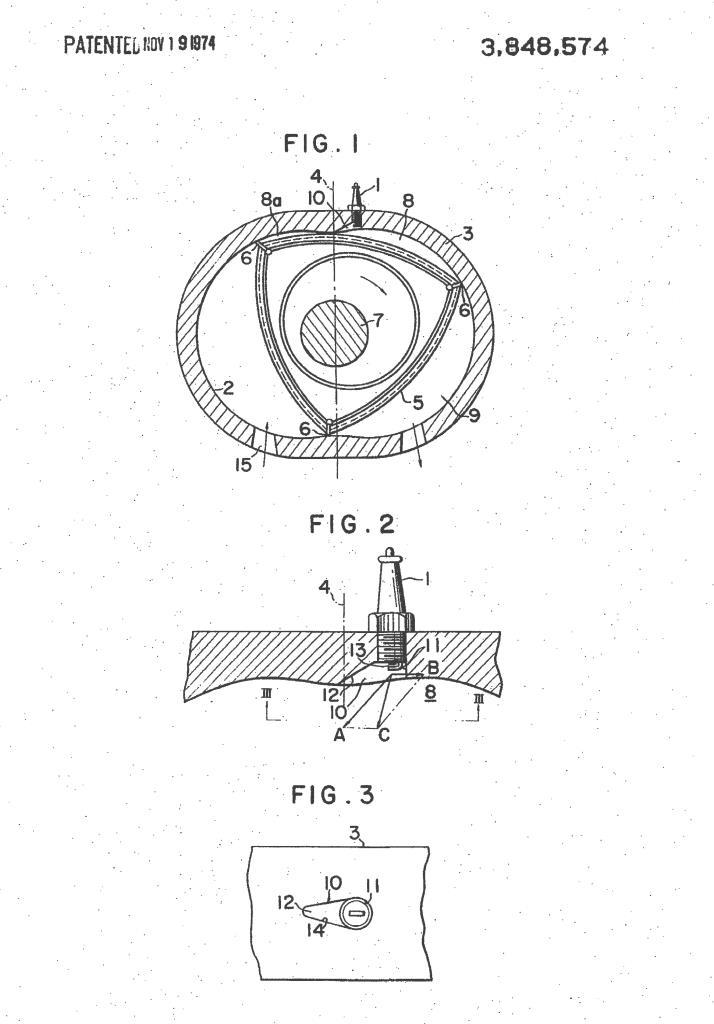 |
Edited by - urquiola on Jun 18 2013 08:38:26 AM |
 |
|
|
urquiola
Apprentice
  
Spain
97 Posts |
 Posted - Jun 18 2013 : 08:37:57 AM Posted - Jun 18 2013 : 08:37:57 AM


|
I've got a response from the Liqui-Moly people in Ulm, Germany:
For 4-Stroke engines, the amount of Liqui-Moly added is 4-5% (It seems that it's referred to the amount of Liqui-Moly in the total of lubricating oil in the engine)
For 2-Stroke engines with separate lubrication, the amount of Liqui-Moly added should be 4-5% of total of lubricating oil.
For 2-Stroke engines with lubrication by oil-fuel mix, the amount of Liqui-Moly added must be 1-2 ml per liter of fuel.
For 2-Stroke engines, the amount should be 2% if the clutch is in bath of oil.
For Wankel engines, it's essential differentiating if the oil is added to the fuel (This is the approach giving the best results in any condition and for any endpoint considered) or if the lubricating oil is separated; in the case of lubrication by oil-fuel mixture, the proportion of Liqui-Moly should be as for the 2-Stroke engines with lubrication by oil-fuel mix, and if the Wankel engine is one that has a separated lubrication, this would be the case of most automobile engines, that have a pump that adds a small amount of oil to the places where it's needed, the amount of Liqui-Moly added should be as in the 4-Strokes with separate lubrication.
Liqui-Moly comes in 300 ml cans (18.3 in3), I've found no information about the amount of MoS2 it contains.
The information that Wankel engines do better if the oil is added to the fuel, as in the old moped and other applications 2-Stroke engines is of importance, it comes from the www.rotaryeng.net website, adding oil directly to the fuel can add a lot to the engine life, the problem of choosing the right oil remains, users pointed that for air cooled engines with an oil-fuel mix lubrication, the oil that gave the best results was Shell Rotella 30, and for the liquid cooled engines, Citroen for example advised using a 20W-50 multigrade Total mineral oil, a multigrade oil is required for cold weather engine starts, and a mineral oil is necessary, as synthetic oils do produce a higher and noticeable amount of gums and ashes after being burnt, and this can foul the plug, and stuck the seals. |
 |
|
|
urquiola
Apprentice
  
Spain
97 Posts |
 Posted - Jun 18 2013 : 09:08:09 AM Posted - Jun 18 2013 : 09:08:09 AM


|
Here are some charts in the SAE paper 790435 by T Kohno et al, from Toyota: 'Analysis of Light-Load Performance in Rotary Engines', It contains info about EGR in a Reed-Valve ctd' Peripheral Intake Port Wamnkel RCE. I'm not sure if copyright allows this, so, it's easy to delete everything if necessary.
Download Attachment:  Toyota EGR internal formation data.jpg Toyota EGR internal formation data.jpg
55.21 KB
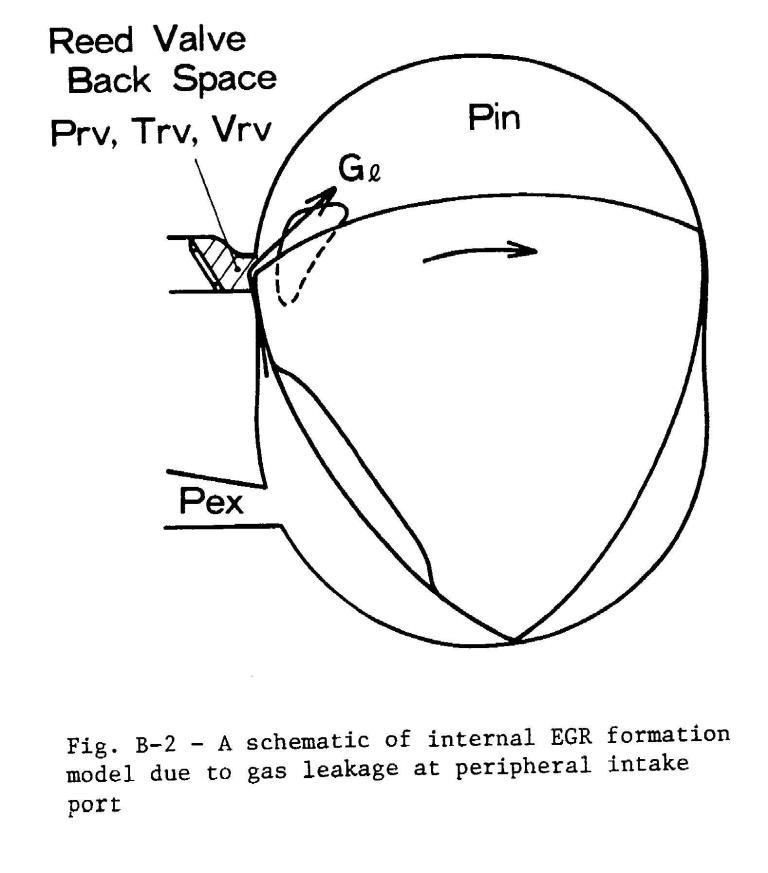
Download Attachment:  Toyota SCRE EGR data.jpg Toyota SCRE EGR data.jpg
82.18 KB
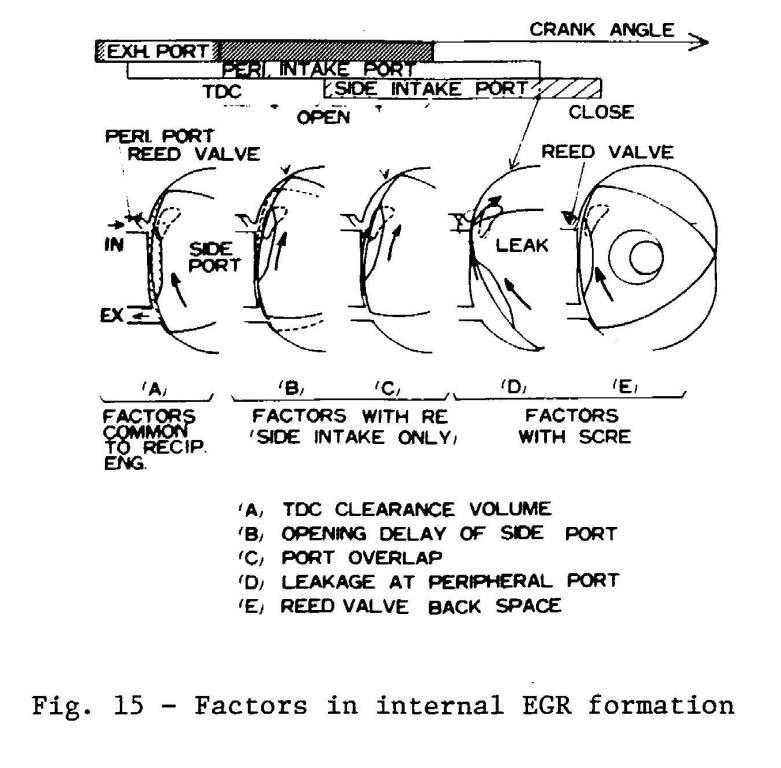 |
Edited by - urquiola on Jun 18 2013 09:09:44 AM |
 |
|
|
urquiola
Apprentice
  
Spain
97 Posts |
 Posted - Jun 18 2013 : 09:11:53 AM Posted - Jun 18 2013 : 09:11:53 AM


|
This is another image from the same SAE 790435 paper
Download Attachment:  PP with R-V Toyota data.jpg PP with R-V Toyota data.jpg
74.96 KB
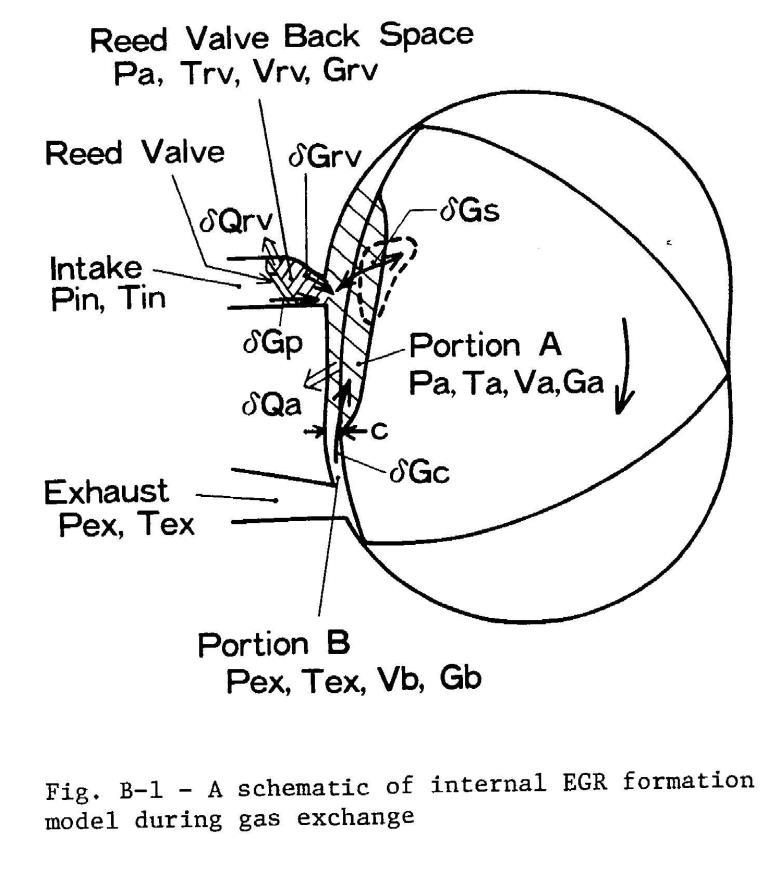 |
Edited by - urquiola on Jun 18 2013 09:13:06 AM |
 |
|
|
urquiola
Apprentice
  
Spain
97 Posts |
 Posted - Jun 18 2013 : 09:17:16 AM Posted - Jun 18 2013 : 09:17:16 AM


|
Info from the 1974 book by E McGovern 'The Rotary Engine Handbook' about trochoid wear with leaded and unleaded fuel. As leaded fuel is not available, the solid lubricating agent action of Lead can be alternatively given by additives containing MoS2, as stated above. Salut +
Download Attachment:  Unleaded vs leaded fuel trochoid wear in RCE.jpg Unleaded vs leaded fuel trochoid wear in RCE.jpg
71.73 KB
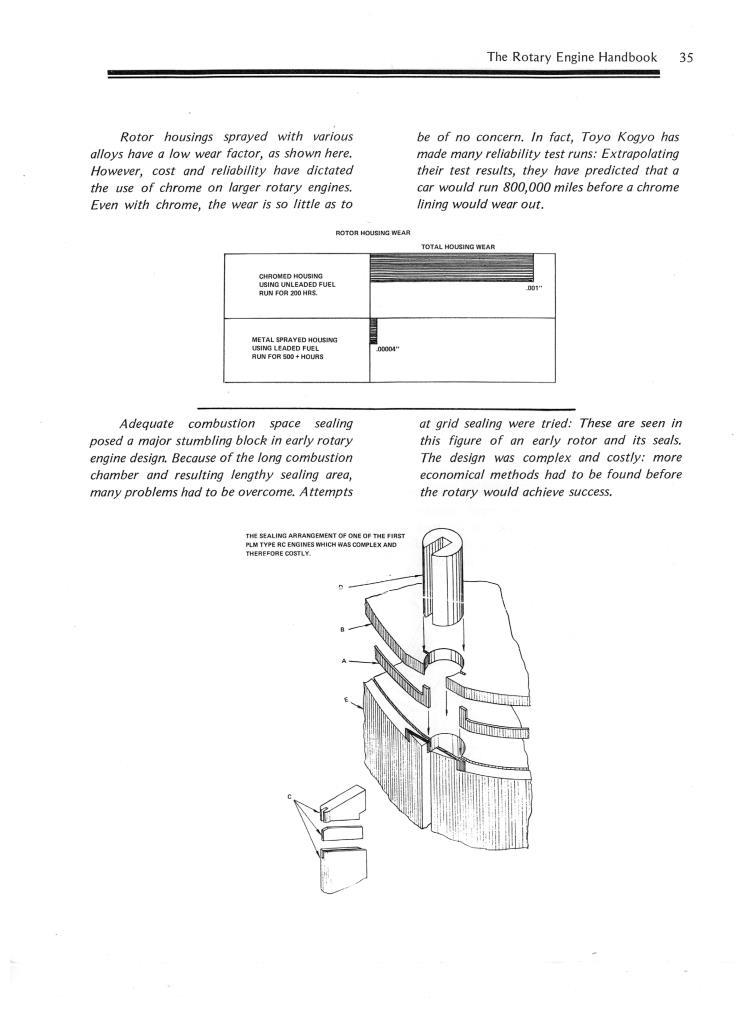 |
Edited by - urquiola on Jun 18 2013 09:19:44 AM |
 |
|
|
Aaron Cake
Administrator
    
Canada
6717 Posts |
 Posted - Jun 22 2013 : 10:40:09 AM Posted - Jun 22 2013 : 10:40:09 AM





|
Lead for a long time was used as a lubricant in fuels. Of course it was banned due to the major health effects of every vehicle spitting lead from the tailpipe. Older piston vehicles especially need different valve seats now that we have lead free fuel. Without the lubricating properties of lead, old valves would fail in short order.
So it stands to reason that it would benefit a rotary as well. Perhaps nowadays there are better choices as you suggest. One would need to examine the emissions changes by burning any moly based grease, as well as the decreased longevity of spark plugs caused by fouling.
Mazda for years has worked to reduce apex seal lubricating oil consumption, mainly as a component of meeting more strict emissions standards. With a few hiccups along the way, the stock metering oil system has worked very well for all these years and there are many high mileage rotarys out there continuing to run just fine. Obviously when building much more power than the stock system was designed for we must move to a 2 stroke premix system.
Apex seal wear was solved long ago by Mazda. In 250,00 miles you're typically only wearing about 2MM off the apex seals. So aside from the stupid Mazda decision in the mid '80s to go with idiotic 3 piece seals (which they have since replaced with proper 2 piece seals), the issue of apex seal is basically solved. Now if we really want to move further, we need to build ceramic seals and housings.  |
 |
|
|
urquiola
Apprentice
  
Spain
97 Posts |
 Posted - Jun 29 2013 : 4:58:15 PM Posted - Jun 29 2013 : 4:58:15 PM


|
| Your comments are right. I just would like to remark that the people around the Corvair flat-six air cooled engines say that if you have the opportunity, it's better that you have the valve seats reinstalled and the whole think reviewed, as the engines that left the production line of GM were not very well finished, and it's better having the valve seats and other things in the engine having a remake by an expert. Mazda is a serious producer of engines and autos, but sometimes, the kind of changes that private owners can apply to their engines wouldn't be practical in a big output production line, this may be the reason why some changes described by private researchers or even other engine makers are no applied to the series. |
 |
|
|
Aaron Cake
Administrator
    
Canada
6717 Posts |
 Posted - Jul 06 2013 : 10:34:06 AM Posted - Jul 06 2013 : 10:34:06 AM





|
| Mazda also has to follow very strict emissions guidlines, which is part of the reason the emissions system was always very complicated on the rotary. Unlike the pison engine the rotary emissions systems needed to deal with overlap, high EGTs and in general a far more "2 stroke" like exhaust output. They have always made judicious use of secondary air from the air pump, alternately injected into the exhaust ports, into the intake manifold, into the cat or vented depending on conditions. Or sometimes all 3. For example, during light decel air is directed into the intake manifold to lean the mixture and prevent backfires. During warmup it's pumped into the exhaust ports to combine with the rich mixture which lights off the cat. |
 |
|
|
urquiola
Apprentice
  
Spain
97 Posts |
 Posted - Aug 22 2013 : 08:19:03 AM Posted - Aug 22 2013 : 08:19:03 AM


|
Thermal Efficiency of an Engine can be expressed by: 100(1-Te/Tp) -in %, Te= Exhaust Temperature, Tp=Peak Combustion Temperature; as pointed in the 'Wankel Engine Breakthrough' YouTube Video, Wankel RCEs have high Exhaust Gas Temperatures, that from the early days of Internal Combustion Engines are known being linked to low Effective Compression Ratio, these first times because of poor quality of available gasoline. If changing the plug hole to an slot as Ernie Brink proposes, reduces greatly the Exhaust Gas Temperatures, this would mean a much higher Effective Compression Ratio, improving the overall efficiency of Wankel Engine; this looks as a change worth testing, but some welding and trochoid surface coating expertise is needed. Rounding the plug hole-trochoid surface intersection corner, and also port-trochoid surface intersection would improve engine's life, as it would minimize chances of seals hitting hardly the hole borders. We wait for more experimental data about these modifications, please! Salut †
Boquilla=nozzle, port, tube, duct, hole.
Download Attachment:  -Entry shapes -form Bosch manual of automobile technics 001.jpg -Entry shapes -form Bosch manual of automobile technics 001.jpg
90.04 KB
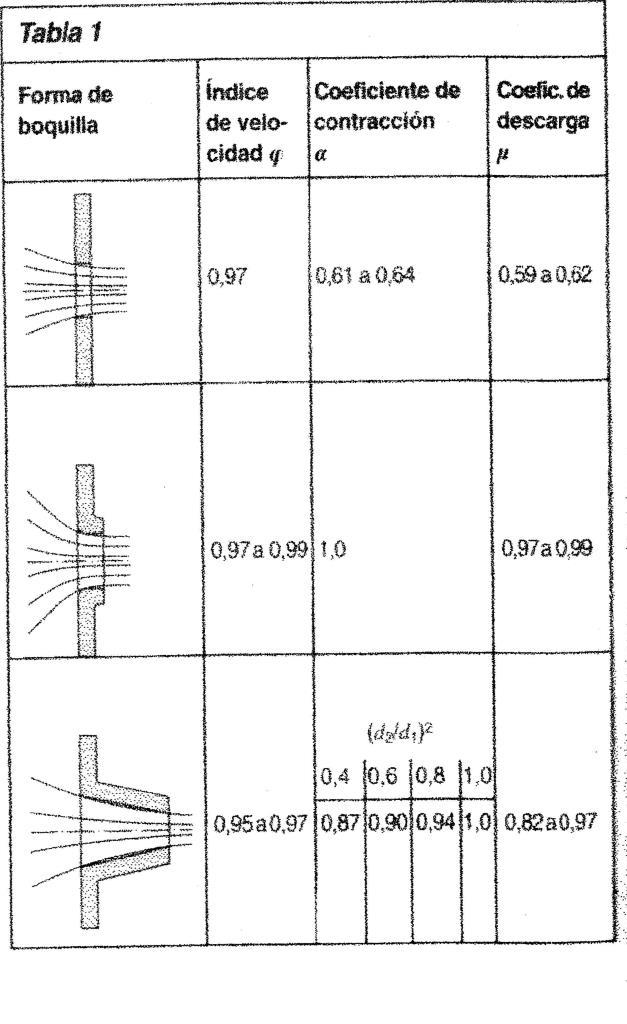 |
Edited by - urquiola on Oct 13 2013 11:22:06 AM |
 |
|
|
urquiola
Apprentice
  
Spain
97 Posts |
 Posted - Sep 07 2013 : 05:40:32 AM Posted - Sep 07 2013 : 05:40:32 AM


|
There's some room for improving Volumetric Efficiency of RCEs at low rpm, as pointed in the Curtiss-Wright's figures from SAE paper S236, by R T Hurley, also published in SAE Journal, June 1960, and the K Yamamoto 1981 book'Rotary Engine'. Let's see what happens if proposed changes are implemented. Salut †
Download Attachment:  RCE breathing.jpg RCE breathing.jpg
98.98 KB
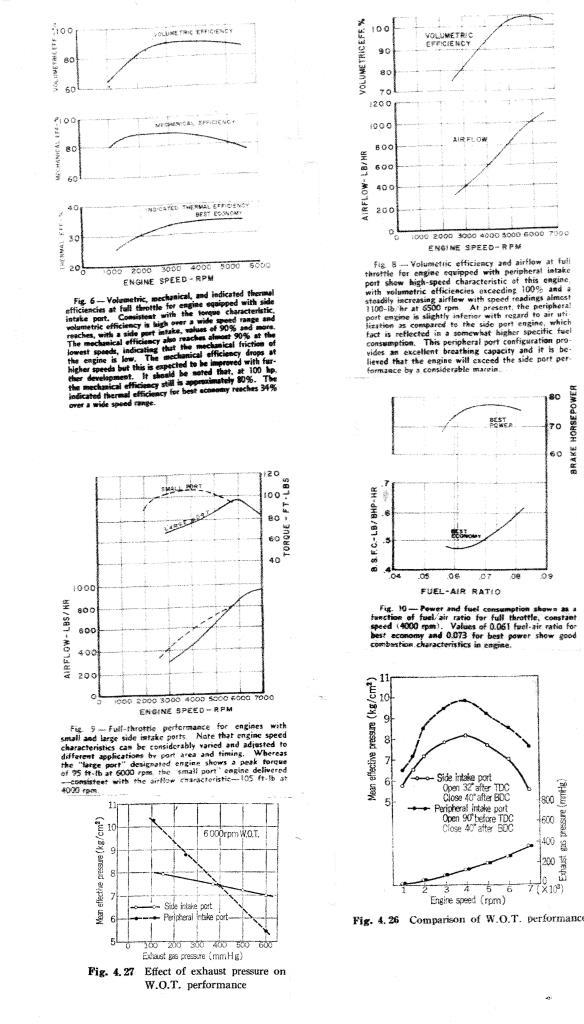 |
Edited by - urquiola on Sep 07 2013 05:48:59 AM |
 |
|
|
urquiola
Apprentice
  
Spain
97 Posts |
 Posted - Oct 13 2013 : 11:11:47 AM Posted - Oct 13 2013 : 11:11:47 AM


|
A question: is there somebody willing to provide us with data about the flow of air (liters/min) and pressure (psi, or another unit: lb.ft, kg/m2, kg/cm2, gr/cm2, and so on...) at which the air pump injects air in the thermal reactor or in the emission reduction systems in the RX-7 and other RCE Mazda cars' exhaust, and also the same in connection to the displacement and power of the Wankel Rotary engine?
Thanks. Best regards. Salut † |
 |
|
 Topic Topic  |
|
|
|

